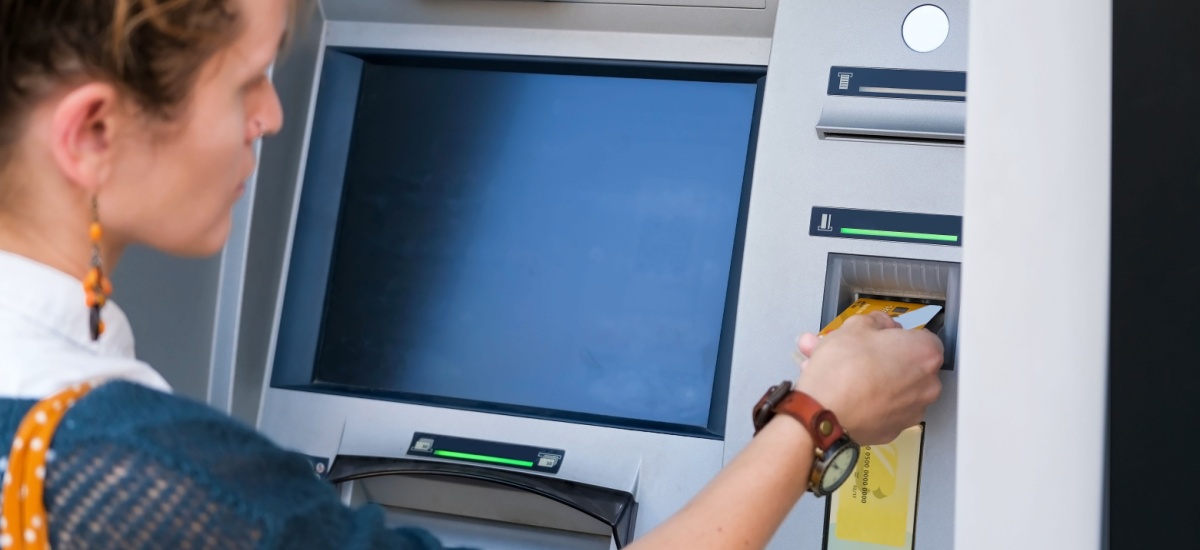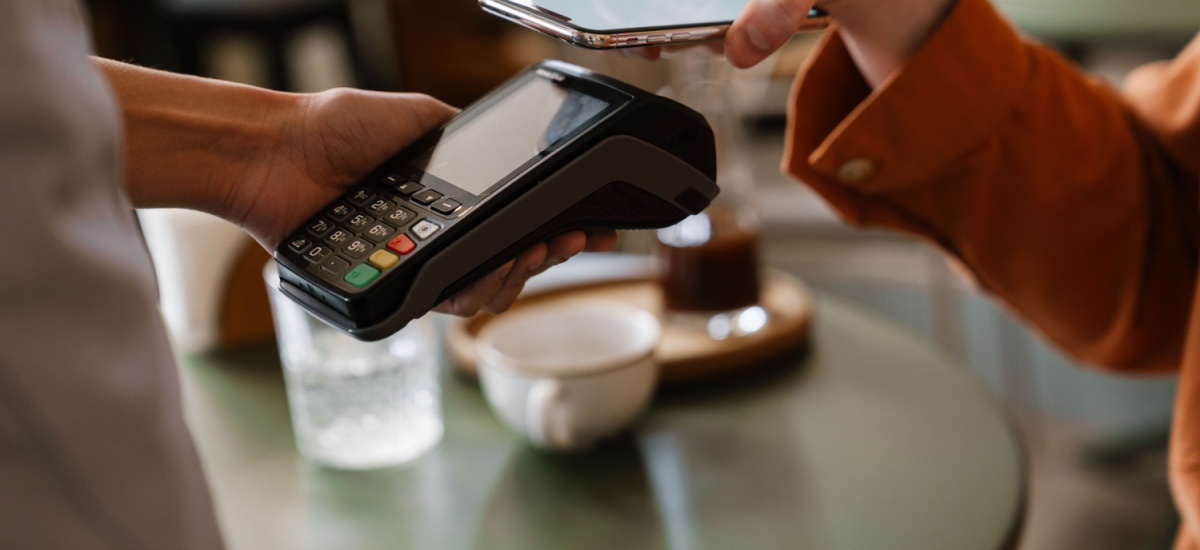ATMs in Croatia: locations, fees, and tips [2023]
Going island hopping in Croatia is a bucket list kind of trip. While you’re there, you’ll find that it’s common and easy to use credit and debit cards at most...

Planning a trip to Croatia soon? You’re likely in the process of working out a travel budget and figuring out how much you want to spend. However, another important factor you should consider is the difference in spending habits between the Croatian and UK citizens.
Croatians mainly rely on cash, although cards are also widely accepted in bigger cities and on popular islands. However, you most likely won’t be able to go completely cashless. We’ll go into more detail to help answer the question - which is more convenient, cash or card in Croatia?
We’ll also show you a cost-effective way to handle your spending in Croatia. For all international payments, whether online or in person, you can rely on the Wise card. You can even withdraw euros like a local for low fees at a mid-market exchange rate.
Cash is the main payment method in Croatia, especially in small towns. Family-owned businesses and street vendors also prefer it because it allows them to avoid some transaction fees.¹
When you see how much Croatians use cash, it can seem like alternative methods only make up a tiny percentage. However, estimates show that there has been a 20% drop in cash payments over the past decade.² If you plan on visiting famous Croatian tourist areas, you’ll see that you’ll be welcomed with a high level of card acceptance.
All this being said, you’ll be able to get by with just your card in the popular cities and islands, but it’s still convenient to keep some cash on you. Card terminals don’t always work and there’s a chance you won’t even find one if you’re visiting rural Croatia.
It’s not mandatory to tip in Croatia, but it’s greatly appreciated. The tip or the service fee is never added to your bill, so it’s entirely up to you if you want to leave it.
There aren’t any rules when it comes to the tipping rate. It’s usually recommended to either round up the amount or tip 10–15% of the total. Or, if you’re really satisfied with the service, feel free to leave more!
Want to work out exactly how much you should tip in euros? Use our exchange rate currency converter.
We’ve listed some common situations where you’ll be paying for things in Croatia. Here’s whether you’ll be able to pay by card, in cash or both:
| Paying for… | Card | Cash |
|---|---|---|
| Taxis⁴ | Sometimes | Yes |
| Convenience stores | In larger cities, yes¹ | Yes |
| Konobas (local taverns) | In larger cities, yes¹ | Yes |
| Regional/city buses⁵ | Usually yes | Yes |
| Public transport⁶ | In larger cities, yes (via the official app) | Yes |

Locating an ATM in Croatia won’t be an issue, unless you’re visiting some small or remote islands. Keep in mind that an ATM is called ‘bankomat’ in Croatian, so that’s the sign you should be looking for.
Croatian ATMs mainly accept 4-digit PINs. The withdrawal limits are anywhere from €100 to €800 per transaction, but they’re usually around €700. ATM fees vary, but be careful with no-fee ATMs. This means that the fee is included in the exchange rate.
Yes, your UK debit card will most likely be accepted in Croatia. Cards issued by global providers such as Visa and Mastercard are commonly used.
You could encounter an issue if you’re visiting remote areas, where cards might not be accepted at all.
Yes, credit cards issued by major global providers are accepted in Croatia, both for ATM withdrawals and for everyday spending. If you plan on visiting smaller towns, make sure you have cash with you as well.

Croatian citizens prefer cash payments, so you’ll be able to use cash everywhere. You’ll see for yourself that some family-owned konobas (local taverns) or small businesses might not even have card terminals. Also, if you plan on travelling off the beaten path and exploring rural Croatia, cashless payments might not be supported there at all.
Besides being the most popular payment method, cash will also come in handy for leaving tips. When you give a cash tip, you’re making sure that the specific person that served you receives your money. It’s appropriate to leave tips in restaurants, taxis, hotels or when you’re on a guided tour.
Last but not least, don’t miss out on the Croatian open-air markets or street vendors, especially if you’re going to the seaside. You’ll be able to buy unique souvenirs and the freshest produce, but only if you have cash. This is a great way to blend in with the locals.
The top reason for using cards when paying in Croatia is convenience and safety. If you’re carrying lots of cash around, you constantly have to worry about pickpockets and not losing sight of your money. Even if you lose your payment card, you can easily block it.
However, it’s still strongly recommended to carry at least some euros in cash, even if it’s just coins.
Croatian retailers and merchants are increasingly incorporating contactless terminals at points of sale. Not only this, they’re also including mobile POS or virtual POS terminals. This means you won’t have a problem with tap-to-pay transactions on your vacation.
Your Wise card can also be used for contactless payments in Croatia. If you don’t want to carry cards with you, you can get the Wise virtual card with the same features.

Besides using cash or cards in Croatia, other payment methods are also available.
Well known digital payment options such as Apple Pay and Google Pay are also popular in Croatia. They even have a local digital wallet with one million users called AirCash.
AirCash allows payments, instant deposits, withdrawals and money transfers. There are plans to launch it in some other European countries, such as Switzerland, Spain, Italy, France and the Balkan region.¹⁰
For an additional layer of security, you could add your Wise virtual card to your wallet. It has all the benefits of a regular Wise card, but it exists in your phone only. You can freeze your Wise virtual card after every transaction, so top-notch security is guaranteed.
If you plan on visiting popular tourist spots, cards will be accepted pretty much anywhere. They’re also more convenient, so you don’t have to carry euros around with you.
On the other hand, cash is still the primary payment method in Croatia. You’ll be able use it for everything from restaurant bills to souvenirs, wherever you go. It’s crucial for tipping or just rounding up the bill.
The final verdict on the cash or card in Croatia debate is that, while you should ideally have both, cash is the safest choice for all styles of travel.
Want to spend like a local in Croatia, without worrying about exchange rates and hidden fees? The Wise card, from the money services provider Wise, might be just the thing you’re looking for.
The Wise card can be used for international payments. It automatically converts the currency at the mid-market exchange rate with only a small, transparent currency conversion fee.
You can also use it to easily withdraw cash from the ATMs in Croatia. You can make 2 withdrawals of up to 200 GBP each month for free per account. After that, there is a charge of 0.5 GBP per withdrawal. There is also a 1.75% fee on any amount you withdraw above 200 GBP.
Spend like a local with Wise 💳
To summarise, here are some of the most frequent questions about using cash or cards in Croatia.
You should carry cash when in Croatia, even when visiting popular tourist spots. It will come in handy for leaving tips or when visiting local small businesses.
Yes, contactless payments are common in Croatia, whether via cards or mobile wallets.
Yes! International cards are accepted in Croatia, including the Wise card.
That greatly depends on your spending habits and the time of year you choose for visiting. You can always withdraw more money if you end up needing it.
Sources used:
Sources last checked on date: 31-May-2024
*Please see terms of use and product availability for your region or visit Wise fees and pricing for the most up to date pricing and fee information.
This publication is provided for general information purposes and does not constitute legal, tax or other professional advice from Wise Payments Limited or its subsidiaries and its affiliates, and it is not intended as a substitute for obtaining advice from a financial advisor or any other professional.
We make no representations, warranties or guarantees, whether expressed or implied, that the content in the publication is accurate, complete or up to date.

Going island hopping in Croatia is a bucket list kind of trip. While you’re there, you’ll find that it’s common and easy to use credit and debit cards at most...

In this guide, we’ll look at the currency in Croatia. Read about the adoption of the euro, the previous currency Croatian kuna, withdrawing cash, and more.